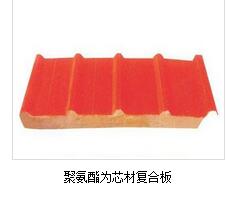
产品推荐
RECOMMEND新闻推荐
NEWS RECOMMENDATION济南泡沫复合板的厚度该怎么选择?
发布时间:2025-05-19 来源:http://www.iinstax.cn/
在建筑围护系统中,泡沫复合板如同“空间调温师”,既要抵御外界温差,又要平衡室内舒适度。而厚度的选择,恰似为其量身定制的“智能铠甲”——过薄则难以胜任保温重任,过厚又可能造成空间浪费。这场关于厚度的博弈,本质是功能需求与空间效率的精准权衡。
In the building envelope system, foam composite board is like a "space temperature controller", which not only needs to resist the external temperature difference, but also needs to balance the indoor comfort. The choice of thickness is like a tailor-made "smart armor" - too thin makes it difficult to fulfill the insulation task, and too thick may cause space waste. The essence of this game about thickness is a precise balance between functional requirements and spatial efficiency.
第一层逻辑:功能需求的“厚度密码”
The first layer of logic: the "thickness password" for functional requirements
泡沫复合板的厚度首先需破解应用场景的“功能密码”。在屋顶系统中,板材需同时承担保温与防水双重角色,厚度需满足≥80mm的基准线,以形成连续的热阻层。而在外墙保温场景中,60mm厚度即可满足常规节能要求,若叠加装饰面层,则需增配5mm误差补偿层,确保整体平整度。
The thickness of the foam composite board first needs to crack the "function password" of the application scenario. In the roof system, the panels need to play a dual role of insulation and waterproofing, with a thickness that meets the baseline of ≥ 80mm to form a continuous thermal resistance layer. In the scenario of external wall insulation, a thickness of 60mm is sufficient to meet conventional energy-saving requirements. If a decorative surface layer is added, a 5mm error compensation layer needs to be added to ensure overall flatness.
更关键的是特殊区域的“厚度强化”。在门窗洞口、管道穿墙等热桥部位,板材厚度需提升至常规区域的1.5倍,形成“热阻锁扣”,将热损失降低40%以上。这种“局部增厚”策略,如同为建筑穿上“补丁毛衣”,在细节处彰显节能智慧。
More importantly, the "thickness strengthening" of special areas. At thermal bridge locations such as door and window openings, pipe penetrations, etc., the thickness of the board needs to be increased to 1.5 times that of the conventional area to form a "thermal resistance lock" and reduce heat loss by more than 40%. This "local thickening" strategy is like putting a "patch sweater" on a building, showcasing energy-saving wisdom in details.
第二层逻辑:材料特性的“厚度边界”
Second layer logic: "thickness boundary" of material properties
泡沫复合板的厚度并非孤立存在,其性能边界由材料特性决定。密度低于18kg/m3的板材,厚度超过100mm时易出现压缩变形,如同“过度充气的气球”;而密度≥22kg/m3的高强度板材,厚度上限可扩展至150mm,仍能保持结构稳定性。
The thickness of foam composite plate does not exist in isolation, and its performance boundary is determined by the material characteristics. When the density of the board is less than 18kg/m 3 and the thickness exceeds 100mm, it is prone to compression deformation, like an "overinflated balloon"; High strength boards with a density of ≥ 22kg/m 3 can have an upper limit of thickness that can be extended to 150mm, while still maintaining structural stability.
闭孔率是另一关键指标。闭孔率≥90%的板材,厚度每增加10mm,热阻值提升约8%,形成“厚度-效能”的线性关系;而闭孔率<85%的板材,厚度增加带来的效能提升呈边际递减效应。这种材料特性差异,要求厚度选择必须建立在科学检测基础上。
The closed pore rate is another key indicator. For boards with a closed cell rate of ≥ 90%, for every 10mm increase in thickness, the thermal resistance value increases by about 8%, forming a linear relationship between thickness and efficiency; The efficiency improvement brought by the increase in thickness of the board with a closed cell rate of less than 85% shows a marginal decreasing effect. The difference in material properties requires that thickness selection must be based on scientific testing.

第三层逻辑:空间效率的“厚度经济学”
The third layer of logic: the "thickness economics" of spatial efficiency
在寸土寸金的建筑空间中,厚度选择需遵循“空间经济学”。对于层高受限的改造项目,采用50mm超薄型板材配合真空绝热板,可在保证节能率的同时释放8%的净高空间。而在工业厂房中,通过优化龙骨间距,使120mm厚板材实现150mm板材的承载效果,这种“厚度虚化”技术可降低用材量15%。
In the construction space where every inch of land is valuable, the selection of thickness should follow "spatial economics". For renovation projects with limited floor height, using 50mm ultra-thin panels combined with vacuum insulation panels can release 8% of net height space while ensuring energy efficiency. In industrial plants, by optimizing the spacing between keels, 120mm thick boards can achieve the load-bearing effect of 150mm boards. This "thickness virtualization" technology can reduce the amount of materials used by 15%.
更值得关注的是复合结构的应用。将泡沫板与纤维增强层、防水透气膜复合,可在总厚度不变的前提下,使系统性能提升30%。这种“功能叠加”策略,如同为板材装上“增效外挂”,打破厚度与性能的线性桎梏。
More noteworthy is the application of composite structures. The combination of foam board, fiber reinforced layer and waterproof breathable film can improve the system performance by 30% without changing the total thickness. This "function stacking" strategy is like installing "efficiency enhancing plug-ins" on the board, breaking the linear constraints of thickness and performance.
第四层逻辑:全生命周期的“厚度智慧”
Fourth layer logic: "Thick wisdom" throughout the entire lifecycle
厚度选择还需纳入全生命周期视角。在北方寒冷地区,选择80mm厚度板材虽初期投入增加10%,但可减少30%的采暖能耗,5年综合成本低于60mm常规方案。而在南方湿热地区,采用60mm厚度板材配合热反射涂层,既控制厚度又延长使用寿命,形成“薄而韧”的可持续方案。
The selection of thickness also needs to incorporate a full lifecycle perspective. In cold northern regions, choosing 80mm thick boards may increase initial investment by 10%, but it can reduce heating energy consumption by 30%, and the overall cost over 5 years is lower than the conventional 60mm plan. In the humid and hot regions of the south, using 60mm thick boards combined with heat reflective coatings not only controls thickness but also extends service life, forming a sustainable solution of "thin and tough".
这种智慧更体现在维护阶段。预留5%的厚度冗余量,可使板材在长期使用后因压缩变形导致的性能衰减控制在5%以内,避免因性能不足引发的二次改造。
This wisdom is more reflected in the maintenance phase. By reserving a 5% thickness redundancy, the performance degradation caused by compression deformation of the board after long-term use can be controlled within 5%, avoiding secondary modifications due to insufficient performance.
泡沫复合板的厚度选择,本质是对建筑性能需求的深度解构。它要求设计师兼具工程师的严谨与艺术家的敏锐,在毫米之间构建起功能、美学与经济的完美平衡。当厚度不再只是数字,而成为空间叙事的语言时,我们看到的,是建筑科技从“材料堆砌”向“系统思维”的进化。这种进化,无关未来想象,而是对当下需求的极致回应。
The choice of thickness of foam composite board is essentially a deep deconstruction of the demand for building performance. It requires designers to combine the rigor of engineers with the sensitivity of artists, creating a perfect balance between functionality, aesthetics, and economy in millimeters. When thickness is no longer just a number, but becomes the language of spatial narrative, what we see is the evolution of architectural technology from "material stacking" to "systematic thinking". This evolution is not about imagining the future, but rather an ultimate response to current needs.
本文由济南泡沫复合板友情奉献.更多有关的知识请点击:http://www.iinstax.cn真诚的态度.为您提供为全面的服务.更多有关的知识我们将会陆续向大家奉献.敬请期待.
This article is a friendly contribution from Jinan Color Steel Tile For more information, please click: http://www.iinstax.cn Sincere attitude To provide you with comprehensive services We will gradually contribute more relevant knowledge to everyone Coming soon.
热门产品 / HOT PRODUCT